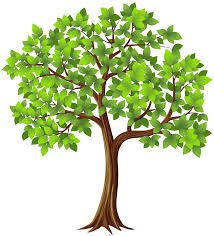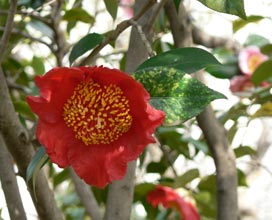 In South Carolina we celebrate Arbor Day on the 1st Friday of December, and that seems strange to some folks who are used to planting trees in April. The reason for planting in the fall or winter is that roots have a chance to establish for 5 or 6 months before the spring flush.
In South Carolina we celebrate Arbor Day on the 1st Friday of December, and that seems strange to some folks who are used to planting trees in April. The reason for planting in the fall or winter is that roots have a chance to establish for 5 or 6 months before the spring flush.
That is a good thing because during the winter months in our moderate temperatures the ground doesn’t freeze, heave or thaw. Dormancy is a period of rest for most trees and shrubs, and leaves that may remain on broadleaf evergreens aren’t losing much water through evaporative transpiration. Trees provide ecological services, and the site selection is very important. The landscape uses for trees besides the most obvious, the oxygen we breathe, could be screening or framing a view, wind break, noise reduction, providing habitat for wildlife, holding soil, moisture and carbon. We should consider planting trees to be a quality of life effort. As green plants sequester carbon dioxide and water, making food to sustain themselves, they are also making food, fiber, building materials and many other oils, fats, proteins, sugars and starches that sustain all animal life on the planet.
Trees are amazing in their ability to be attractive while providing all the other services that our landscapes need. Having a tree which shades the west side of a house, schoolyard, or park can lower energy costs, while also offering a comfortable place to play or relax in the summer. As leaves fall at the end of the growing season they provide organic matter to the soil. Organic matter helps soil to conserve water and nutrients, improves soil structure, and decreases soil erosion. Evergreen trees are still going to lose needles and leaves as the new growth flushes out in the spring. The time to fertilize is during that spring growth.
Choosing the right tree or shrub for the space one needs to consider soil type, pH, and drainage. Exposure to wind, salt and light are also factored into the consideration as well as care and maintenance. A soil sample will give basic fertilization information, but you should also research the types of woody plants that do well in your area. Cold tolerance may not be as important for our area as acclimation to the heat and humidity. In general, locally grown native species are going to be easier to maintain, require less care and maintenance than exotic species. When planting dormant trees and shrubs the planting hole should be just deep enough to accommodate the root ball. It should also be about 2-3 times wider than deep. If the soil is sandy or clay it is perfectly alright to add compost, leaf mold, but not potting soil or fertilizer. Compost and leaf mold will help hold moisture and add organic matter, but potting soil may contain peat, and while it holds water it also can cause a moisture discontinuity. After planting and watering well, add mulch; 2″ should be deep enough, and should not come in contact with the trunk.
Check out the Clemson Home and Garden website for fact sheets on planting, fertilizing, watering and selection of trees. Remember that we need to think globally and plant locally.
Happy belated Arbor Day!
http://www.clemson.edu/extension/hgic/plants/landscape/trees/
Clemson University Cooperative Extension Service offers its programs to people of all ages, regardless of race, color, gender, religion, national origin, disability, political beliefs, sexual orientation, marital or family status and is an equal opportunity employer.







